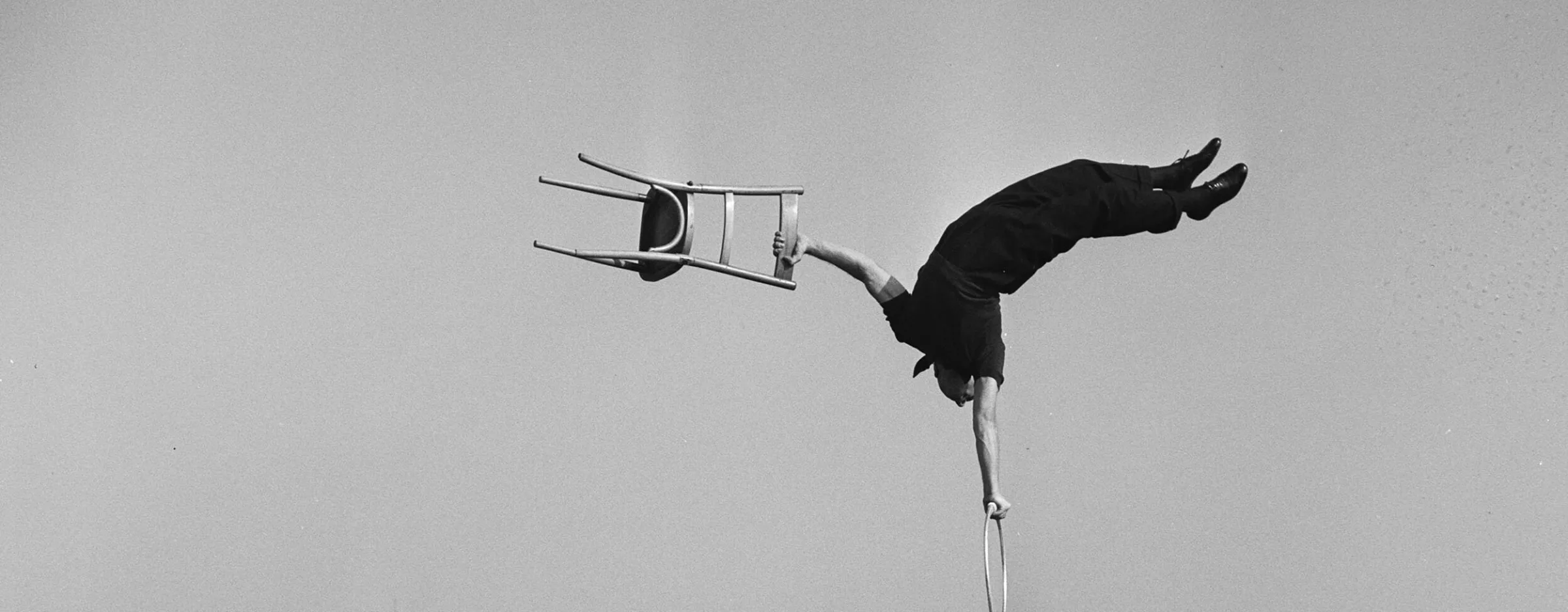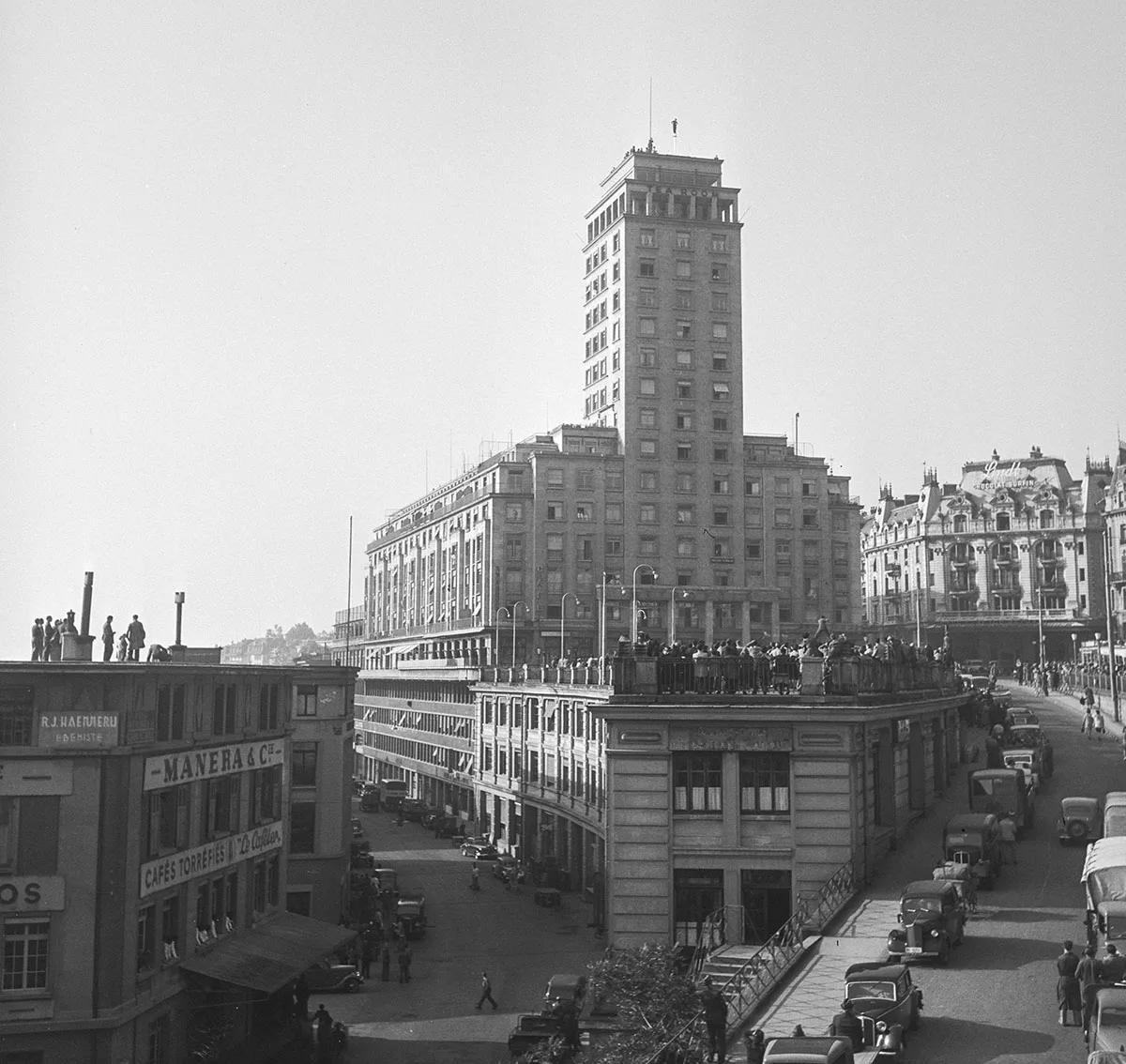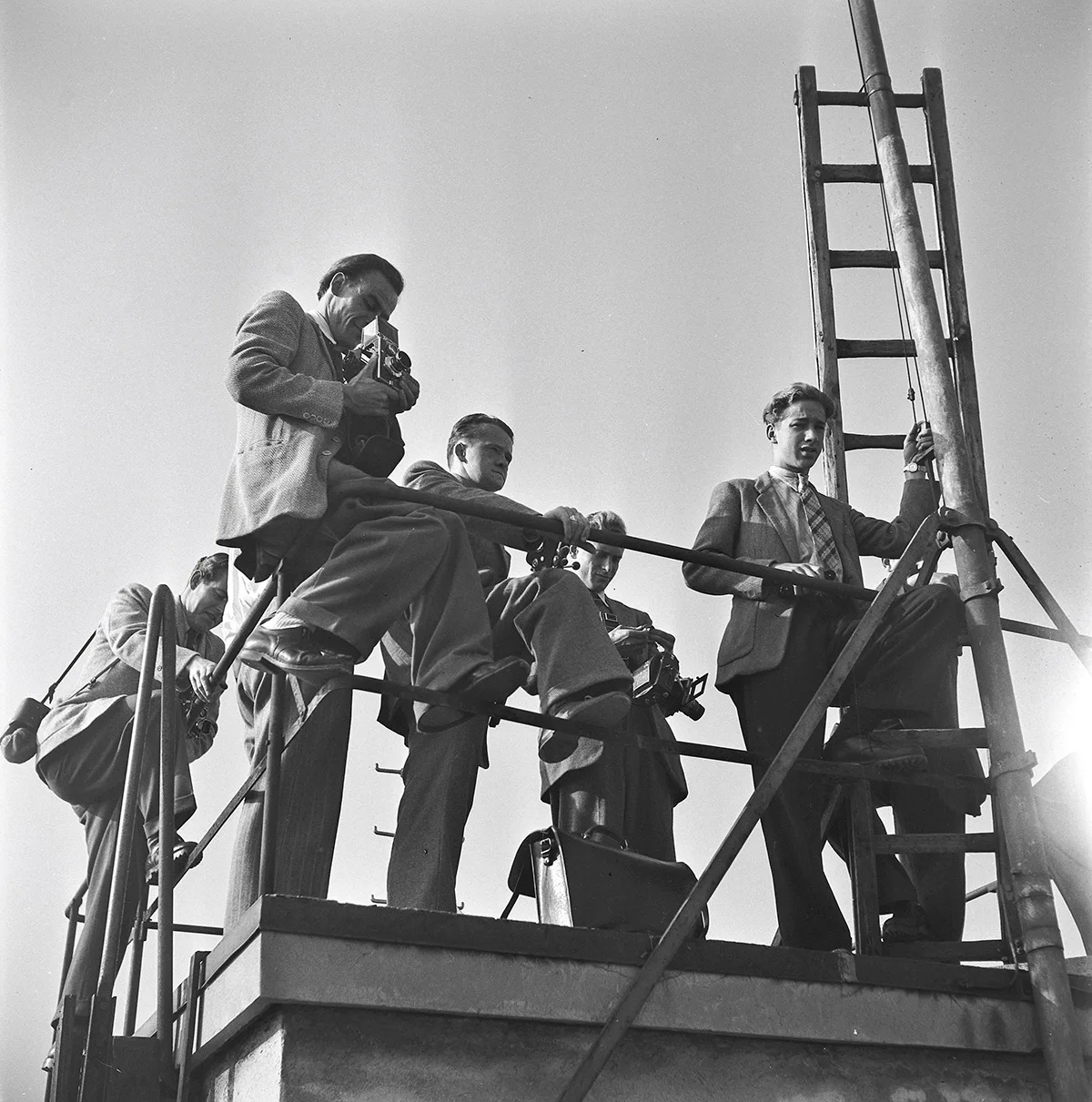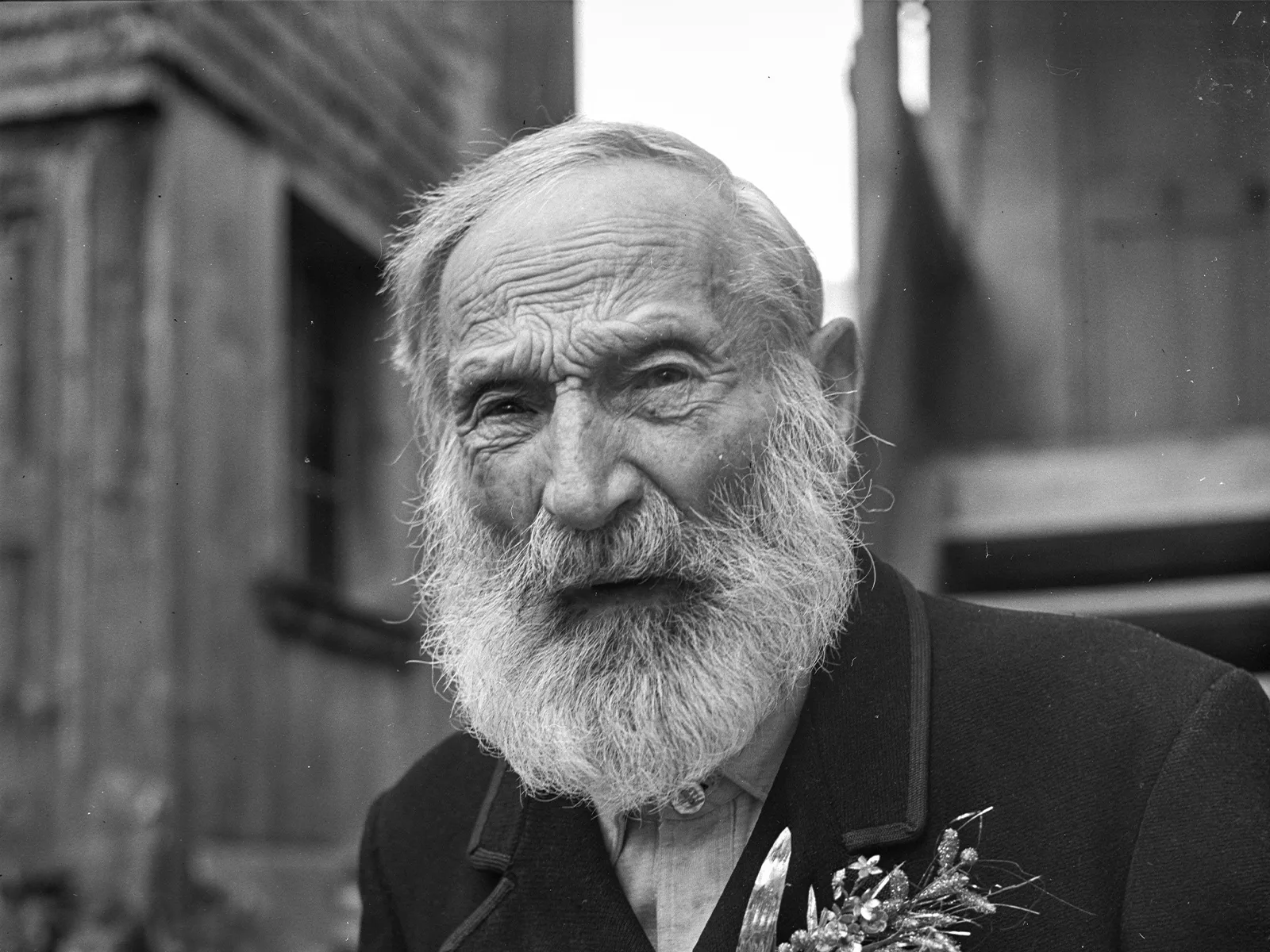
The one and only Unus
There was a time before mobile phones, a time when press photographers were the eyes of an entire nation. Many of the images they captured are now forgotten. For example, those of Unus, the artiste, performing his death-defying balancing act high above the rooftops of Lausanne.
In its origins, press photography was a medium of entertainment. Marching to the same beat as early cinema, this branch of camera work was concerned with the world of attractions and sensational events. And even though actual news photography gradually became more important, tabloid sensationalism always remained a big part of the oeuvre. This is evident from the historical press photo archives held by the Swiss National Museum. Scores of photographs depicting the entertainment industry of the 20th century – from the high-brow stage production to the spectacle on the street – have come down to us.
If a performance promised to be particularly daring, photos were almost guaranteed. And what could sound more thrilling than an artiste famous throughout Europe, who had stacked a few extra metres on top of Switzerland’s first skyscraper to put his own balancing skills to the test? The 68 metres of the Bel-Air Tower in Lausanne obviously weren’t enough for someone who was touted as the ‘world’s greatest sensation’. A podium had to be placed on the top of the tower; on the podium stood a vertical pole several metres high; atop that there was a round, bright light topped by a metal ring, and voilà: now it was finally tough enough for the one and only Unus to do a one-armed handstand.

Unus was the stage name of Franz Furtner, a carpenter from Vienna, who discovered there was good money to be made performing handstand variations. In the picture, dressed in dark clothing, he stands out sharply against the autumn mist that bathes the centre of Lausanne in a diffuse light. With the chair in his left hand, used as a balancing aid, he creates a perfect frame with the Cathedral of Notre-Dame. The cathedral dominates the old town, and is the medieval counterpart to the modern skyscraper from which we are looking over to it. When Notre-Dame was built, performers like Unus were still referred to as jongleurs. Many centuries later, acrobats are still entertaining, and still making their way around the world as professional performers.
Unus began his career in the 1930s in the varieté theatres and nightclubs of Austria and Germany. He became especially famous for his ‘one-fingered handstand’ – a graceful and elegant trick position balancing on just his right index finger. During the Nazi era, he had the dubious honour of counting Adolf Hitler as a fan. After the war, he worked for Switzerland’s National Circus Knie, which was playing a guest spot in Lausanne in those days of October 1947 and, not least thanks to Unus, performing to sold-out audiences. The artiste was then recruited by the US Ringling Bros. and Barnum & Bailey Circus for its ‘Greatest Show On Earth’. In the show business of superlatives on the other side of the Atlantic, he continued to thrill audiences into the 1960s, ultimately becoming a bona fide superstar in the Land of the Free.
The press photo agency ASL

At the lower left of the picture you can see two people; the lady on the right is his wife, Valentina Tuerck Asgard. She probably felt a certain nervous thrill as she stood there watching and giving directions, albeit, owing to her own professional experience, not the same thrill as the large audience down below in the street. A photobook by the Swiss artist duo Fischli/Weiss published in 1985, collecting together photographs of seemingly impossible balancing designs constructed from everyday objects, has the jaunty tagline: ‘Equilibrium is at its most beautiful just before it collapses.’ It can be assumed that in this case, the audience was not hoping the fragile assemblage of person and objects would collapse. Nonetheless, the great curiosity may have been fuelled in part by the possibility of disaster. In the event of any such misfortune, the press photographers would in any case have been on the scene in an instant. One of their main areas of interest was (and still is) also the downside of sensational events: accidents and disasters.




